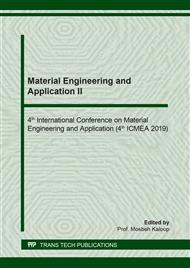p.166
p.171
p.177
p.182
p.188
p.193
p.198
p.203
p.209
High Purity Lime as an Ecologic Alternative for Construction Mortars and Pastes
Abstract:
Limestone is one of the most ancient construction materials that exist, however it has become obsolete over the last decades, being replaced by industrial materials like cement. It must be considered that not only the construction lime can be used in works, but the limestone industry can provide other products like high purity lies The research about the surface area of high purity lime has verified that it exists an improvement in the adhesion and workability features of the material in comparison with construction lime, besides to be a more economical solution than masonry cement. It is proposed in this document the use of high purity lime in construction works to achieve the benefits previously mentioned. Various samples with different percentages of high purity limes were tested in the laboratory, analysing the surface area changes between them, considering its use for construction purposes and its performance.
Info:
Periodical:
Pages:
188-192
Citation:
Online since:
May 2020
Keywords:
Price:
Сopyright:
© 2020 Trans Tech Publications Ltd. All Rights Reserved
Share:
Citation:


